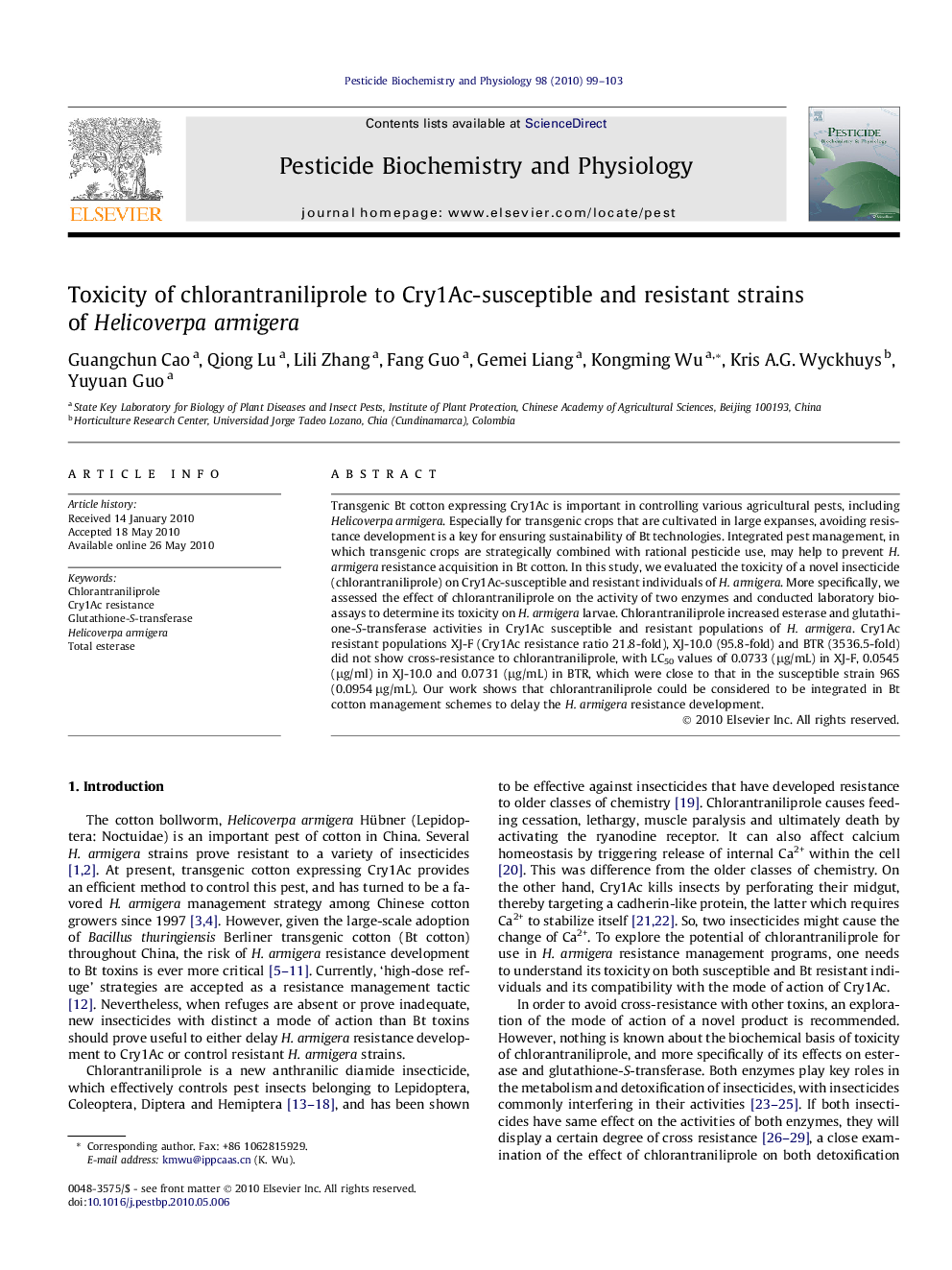| Article ID | Journal | Published Year | Pages | File Type |
|---|---|---|---|---|
| 2009704 | Pesticide Biochemistry and Physiology | 2010 | 5 Pages |
Transgenic Bt cotton expressing Cry1Ac is important in controlling various agricultural pests, including Helicoverpa armigera. Especially for transgenic crops that are cultivated in large expanses, avoiding resistance development is a key for ensuring sustainability of Bt technologies. Integrated pest management, in which transgenic crops are strategically combined with rational pesticide use, may help to prevent H. armigera resistance acquisition in Bt cotton. In this study, we evaluated the toxicity of a novel insecticide (chlorantraniliprole) on Cry1Ac-susceptible and resistant individuals of H. armigera. More specifically, we assessed the effect of chlorantraniliprole on the activity of two enzymes and conducted laboratory bioassays to determine its toxicity on H. armigera larvae. Chlorantraniliprole increased esterase and glutathione-S-transferase activities in Cry1Ac susceptible and resistant populations of H. armigera. Cry1Ac resistant populations XJ-F (Cry1Ac resistance ratio 21.8-fold), XJ-10.0 (95.8-fold) and BTR (3536.5-fold) did not show cross-resistance to chlorantraniliprole, with LC50 values of 0.0733 (μg/mL) in XJ-F, 0.0545 (μg/ml) in XJ-10.0 and 0.0731 (μg/mL) in BTR, which were close to that in the susceptible strain 96S (0.0954 μg/mL). Our work shows that chlorantraniliprole could be considered to be integrated in Bt cotton management schemes to delay the H. armigera resistance development.
